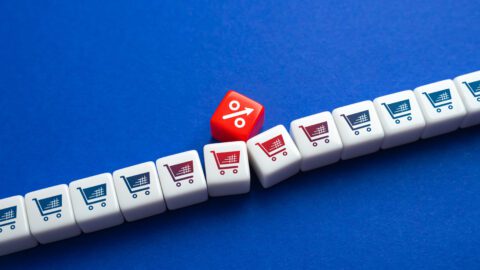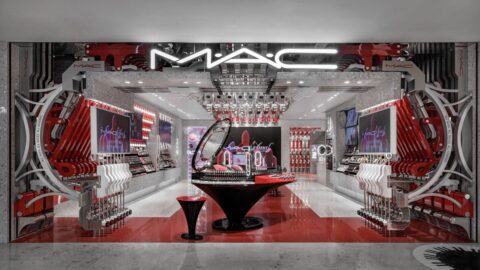The excitement that typically surrounds the back-to-school season is being replaced by stress and uncertainty. Lack of clarity surrounding school reopenings, combined with lack of confidence in remote learning procedures, are driving big spending shifts among parents and caregivers.
First, the good news: back-to-school spending is poised to reach an all-time high among all parents, reaching a total of $101.6 billion, according to research from the National Retail Federation (NRF) and Prosper Insights & Analytics. This number
far surpasses last year’s spending total of $80.7 billion, and it
represents the first time back-to-school spending is poised to exceed $100
billion.
Households with children in elementary and high school are set to spend an average of $789.49, far exceeding the 2019 record of $696.70. College students and their
families are set to spend an average of $1,059.20 per family, up from $976.78 — another record.
However, uncertainty regarding school openings and remote learning practices is impacting what households are spending thus far, according to the NRF survey. Only consumers only had 17% of their shopping done by early July, and 54% said they held off on spending because they didn’t know what they needed. The final shopping lists that are created and shared by teachers will present “information that could reflect schools’ reopening plans and affect how much consumers actually spend,” the NRF reported in a press release.
Advertisement
For many parents, this uncertainty is creating stress. Results from two separate surveys, each collecting feedback from 1,000+ U.S. parents, revealed that 66% of K-12 parents and 62% of college-age parents are anxious about sending their kids back to school. This anxiety is dictating their buying decisions, especially as they try to be proactive and prepare for all possible scenarios.
“As a parent, I think there’s this tendency to make sure your kids get off to the right start,” said Rod Sides, Vice Chairman of Deloitte LLP, and U.S. Retail, Wholesale and Distribution leader in an interview with Retail TouchPoints. “There was a high degree of folks who were cautious about whether their kids were prepared for the next grade, so there may be a tendency to over-compensate and spend a little more than initially planned. This isn’t just from a safety perspective but in terms of the overall learning environment.”
New Realities Influencing Back-To-School Activity
Based on research and expert interviews, six new realities are having the biggest impacts on back-to-school shopping behaviors and preferences.
1. Technology purchases will get the bulk of attention and dollars.
The most notable shift between the 2019 back-to-school season and today is the strong consumer preference for technology over traditional items like apparel and even school supplies. The Deloitte survey forecasts a 28% increase in technology spending for K-12 students, and predicts that 51% of parents plan to spend more on virtual learning tools this year.
“The move from school supplies and apparel to hardware and computers wasn’t at all surprising to us,” Sides explained. “However, what was interesting is the amount of money that’s going to be spent on things like subscriptions for educational services. With the challenges the school systems had moving to the digital format, you can see parents weren’t comfortable with the quality of education.”
2. Health and safety fears inspiring new purchase decisions.
Schools and universities are presenting plans designed to ensure students’ safe return to classrooms, but regardless of their children’s age, parents, grandparents and caregivers are purchasing more health-related goods to help them prepare.
“With COVID-19 cases still on the rise, Americans are preparing differently for this back-to-school season,” said Dave Fisch, General Manager of Shopkick in an interview with Retail TouchPoints. “A heightened focus on safety and savings will guide their purchasing behavior as the health and economic impacts of the pandemic prevail.”
Shopkick’s latest consumer survey of more than 6,700 parents, grandparents and teachers found that 83% plan to purchase items like hand sanitizer, cleaning wipes, paper products like tissues and paper towels, masks, gloves and disposable cutlery for lunchtime.
3. Parents prioritizing the learn-from-home experience.
In addition to children’s’ health and safety, parents are prioritizing creating a comfortable and stress-free learning environment at home, according to ShopStyle.com search data. Despite showing an uptick in searches for “kids clothing” (+25% in search), “girl clothing” (+12.5% in search) and “boy clothing” (+12.5% in search) throughout the month of July, there was a sharper uptick in searches that connected to learning from home, such as “kids desks” (+44% in search), “storage bench” (+10% in search) and “clear storage containers” (+29% in search).
4. Consumers’ desire for fast, efficient shopping is giving big-box retailers an advantage.
As in previous years, mass merchants are poised to take the largest share of back-to-school and back-to-college sales, according to the Deloitte surveys. While 81% of K-12 parents plan to shop with mass merchants, 75% of college parents plan to do the same, largely due to these retailers’ competitive prices, vast product assortments and convenient shopper experiences. “Mass merchants look like they’re going to continue to do well, because if I’m worried about safety, I can take one stop and pick up groceries, some school supplies, some apparel and some electronics,” said Sides. “I don’t have to expose myself to getting in and out of stores several times.”
To maintain the advantage of their breadth and depth of inventory, however, big box stores will need to “keep the shelves stocked with a variety of choices that are competitively priced,” Fisch added. To design a quick and easy experience, Fisch recommended that retailers include “new back-to-school products such as masks, gloves, plastic cutlery and paper goods together with more traditional back-to-school products, decreasing the amount of time shoppers need to spend in-store.”
5. Heightened competition inspiring hyperlocal, omnichannel advertising.
Although brick-and-mortar stores will account for most back-to-school sales, the gap between physical and digital has narrowed significantly. That means both omnichannel retailers and their online-only counterparts will be vying for the same shopper dollar, creating a hyper-competitive advertising landscape. Retailers should ramp up their omnichannel advertising strategies to remain top-of-mind, and leverage store-level product details and services to stand out, according to Robert Rothschild, VP and Global Head of Marketing at Smartly.io, a social media advertising company.
“With new consumer purchasing options – such as buy online, pick up in-store – and changing local in-store conditions, retailers need to launch localized offers at scale, targeting shoppers with customized messaging, local store inventory and store condition information to drive initiatives,” said Rothschild in an interview with Retail TouchPoints. “If there’s one thing we’ve learned from these unusual times, it’s that pausing marketing is not an option. Brands that adapt their messaging to align with what consumers need now will reap the benefits.”
6. Gen Z-centric brands prioritizing digital community building.
Although mass merchants are poised to get the majority of back-to-school and back-to-college sales, apparel and specialty retailers have more opportunities than ever to use social channels like TikTok and Instagram to bridge connections.
“The way a lot of middle schoolers and high schoolers express themselves is through social media,” Sides noted. “If I were an apparel brand, I would leverage the digital community I have to give students an area to express themselves. They’re all involved socially and they have multiple accounts, so you have to foster community to create that brand connection.”
Action Items For Retailers
While new developments are constantly shaping consumer concerns and behaviors, creating a moving target for retailers across categories, experts offered the following best practices that will remain critical as merchants go through the back-to-school season and into holiday.
- Prioritize health and safety: A constant narrative in the new retail climate, health and safety should take precedence for retailers across categories, according to Fisch. “Consumers need the confidence that retailers are taking their well-being — and that of their employees — seriously. This means obvious signs of health precautions, including social distancing markers on the ground, limited in-store shopper capacity, disinfectants at the door and throughout the store, mandatory face coverings for employees and shoppers, and plexiglass barriers at checkout counters.”
- Consider new methods of merchandising and curation: Efficiency has exceeded engagement in most stores, and that means retailers need to get crafty with their merchandising and store design. Fisch recommends organizing aisles based on key back-to-school product categories, and pre-packing bundles of back-to-school items for easy purchase and pickup.
- Flex your fulfillment muscle: Parents of both college-age and K-12 students expect to spend more of their budget online this year, according to Deloitte research. Retailers can satisfy consumers’ immediate needs and win their trust by optimizing their contactless experiences, such as BOPIS or BOPAC (buy online, pick up at curbside).
- Always be agile: Especially in marketing and advertising, agility is key to keeping pace with ever-changing consumer mindsets, emotions and behaviors. “Winning brands will continue to monitor consumer behavior closely, offering products and services that are relevant, timely and valuable, and adapting their advertising channels and messaging accordingly,” said Rothschild. “Understanding your audience will translate into more consistent brand advocacy — and greater return on ad spend.”














